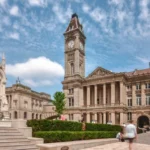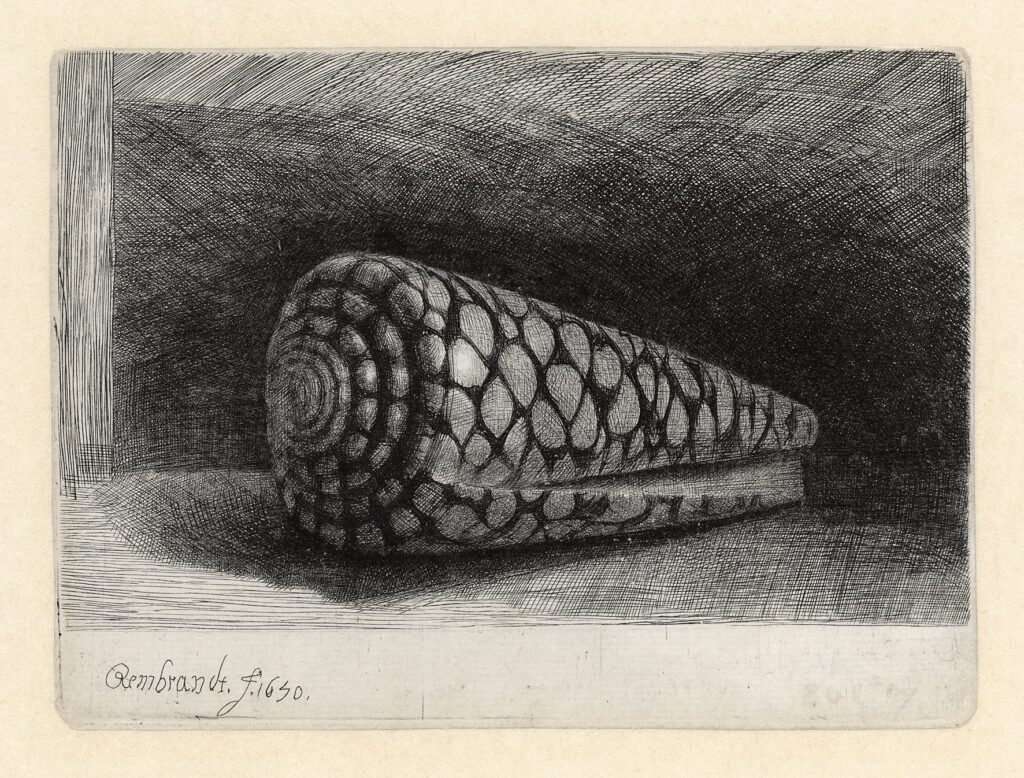Rembrandt Harmenszoon van Rijn (1606-1669) is widely regarded as one of the greatest artists of all time. Apart from his atmospheric paintings, he also produced more than 300 etchings. Ranging in scale and detail, these etchings exemplify Rembrandt’s mastery of print.
Rembrandt Harmenszoon van Rijn (1606-1669) was a master of innovation. As an artist, he constantly sought out new possibilities and new solutions for making art. This is evident not only from his paintings, but also from the more than three hundred etchings that he made in his career. Rembrandt: Masterpieces in Black and White—Prints from the Rembrandt House Museum presents the full range of Rembrandt’s etching output, alongside prints by select forerunners and contemporaries. It also demonstrates Rembrandt’s centuries-long impact on the field of printmaking through a select group of etchings by later nineteenth and twentieth-century artists.
A Dutch Baroque painter and printmaker, Rembrandt was one of the greatest storytellers in the history of art, possessing an exceptional ability to render people in their various moods and dramatic guises. Today he is widely regarded as one of the two most important printmakers in history, along with Albrecht Dürer. From his earliest etchings, Rembrandt created original compositions oriented towards the specific character of the medium. As a result, his prints range widely from large to small, and from summary sketches to laborious and elaborate works. He addressed an equally varied set of subjects, including Biblical stories, portraits, depictions of exaggerated or characteristic facial expressions called “tronies,” observations of everyday life, landscapes, nude model studies, and even sheets packed with small sketches.
Rembrandt’s printmaking style changed over his career and he honed his style across a wide variety of subjects. Both his progress and the variety of his output will be traced in a number of thematic sections in this exhibition. These sections will cover everything from Rembrandt’s masterful skills as a visual narrator, his bold exploration of light and dark, and how he used self-portraits to fashion his own visual identity and explore the complexity of aging. The exhibition also includes select comparative works by Rembrandt’s forerunners and contemporaries, including his teacher Pieter Lastman and his pupils, Ferdinand Bol and Govert Flinck, which will contextualize his work and shed light on his specific innovations, such as his repeated experiments with etching, tonal effects, and the dramatic portrayal of his subjects.
ITINERARY




BOOKING
For booking information, contact Senior Curator Anke Van Wagenberg, PhD. avanwagenberg@amfedarts.org
Note: Due to the sensitivity of works on paper, this rare exhibition will exclusively travel to three United States venues.
PUBLICATION
Rembrandt: Masterpieces in Black and White—Prints from the Rembrandt House Museum is accompanied by a free educational brochure developed by the AFA.
CO-ORGANIZER
The Rembrandt House Museum in Amsterdam is the only museum in the world exclusively dedicated to Rembrandt. Visitors can experience how the artist lived and worked in this house, with the studio as the absolute highlight. Besides the house itself, the collection of Rembrandt’s prints is the museum’s most valuable asset. The museum also collects prints by artists who were inspired by Rembrandt, such as those associated with the Etching Revival (1840-1940).
GUEST CURATORS
Epco Runia is Head of Collections at the Rembrandt House Museum and a specialist in seventeenth-century Dutch art, particularly Rembrandt. Runia began his career at the Rijksmuseum in Amsterdam, worked at the Frans Hals Museum in Haarlem, was associated with the Mauritshuis in The Hague for eighteen years, and has now been working at the Rembrandt House Museum in Amsterdam for seven years.
CREDIT
This exhibition is organized by the American Federation of Arts and the Rembrandt House Museum, Amsterdam. The exhibition is generously supported by Betsy Shack Barbanell and Monique Schoen Warshaw. Additional support has been provided by the Gladys Krieble Delmas Foundation, IFPDA, and Dutch Culture USA, part of the Consulate General of the Netherlands in New York.





